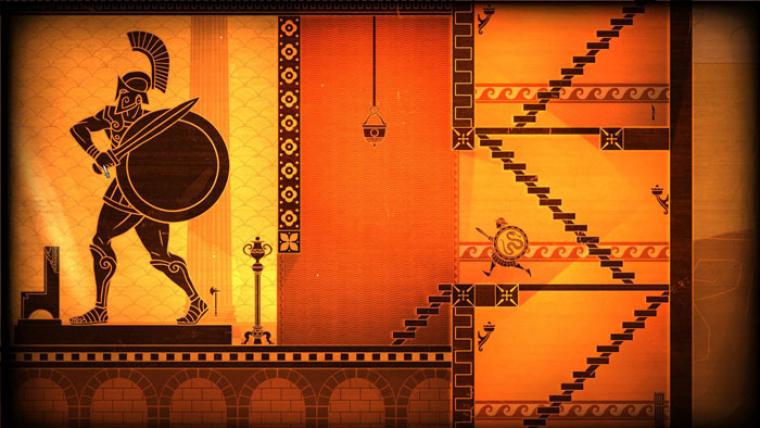Style is King Footnotes #4: Alientrap's "Apotheon"

Researching for my piece on visual innovators in games, I sent a few questions to Alientrap Games, developers of the fabulous Apotheon, the world's first and finest sidescroller inspired by ancient Greek pottery. Here's what the game's art director Jesse McGibney had to tell me.
In your own words: What makes your game's visual style unique?
I think the classical Greek art style has really been under-explored in games (or other popular media for that matter). It's a style that pretty much everyone is familiar with, as are the myths and narratives that are so closely linked to it. If I say "Hercules" or "Zeus", most everyone in the western world knows what I'm talking about. And even though a lot of games might draw inspiration from the classic stories and characters, there really hasn't been much that's embraced the whole package of art, narrative, and history I think in the same way that we're attempting to do with Apotheon.

Why did you choose that style?
When we eventually settled on the black-figure pottery style, in hindsight it seemed like a no-brainer. It was perfect for what we wanted, and was very surprising that we seemed to be the first to try it for a full game. Greek mythology is recorded largely on these pots, so the art and the narrative are already inseparable. If someone sees the black-figure art, they automatically know what the subject matter and setting are.And then from a game development standpoint, the style is incredibly easy to work with. It's already in a 2D side-scroller perspective, it uses simple lineart drawings which are very fast to produce, easily tiled and communicates information well to the player without excessive clutter. All we really had to do was look at the pottery, and try to figure out how to make it move.

What do you think about the industry's constant striving for photorealism?
"The closer we get to photorealism, the more artists will be willing to see what ways they can use it more artistically."
I think it's a pursuit of a technological goal rather than an artistic one. And that's a fine goal to have, as it pushes the innovation of the hardware and software developers can use, and I can see why big companies with lots of money to throw around are so invested in it. A good artist can make great art with a stick of charcoal, or they can make great art with multi-million dollar CGI suite, the difference being that the investors don't make much money on the little stick of burnt wood. I also think the closer that we get to photo-realism (and we're getting pretty damn close), the more artists and developers will be willing to then take that awesome technology and see what ways they can use it more artistically.It's sort of like learning to draw. First you have to study structure and anatomy and go to life-drawing classes until you can draw very realistically. Then once you have all that knowledge, you can start to twist and shape it into something more stylistic. I think a good example of this is Team Fortress 2. It's very cartoony and exaggerated, but without the built up technology from trying to do more realistic games (like Half-lLife 2), it would have never looked as awesome as it does.

Do you see other visual arts and artists as inspiration? If so, which in particular?
"Imagine a cubist game where you could walk around a 3D environment, but everything would have multiple abstracted perspectives."
While doing research for Apotheon, I can say that I've found boundless inspiration from just reading history books and websites. There are so many ancient cultures and people that have such defining art styles and narratives that would make fantastic fodder for game ideas and settings. Things like European medievaltapestries, Mayan/Aztec stone reliefs, Huron totem carvings, Egyptian hieroglyphics, heck even pre-historic cave paintings would make for some pretty cool art themes. If you want to get really weird, I would love to see some modern art genres making their way into games. Imagine a cubist game where you could walk around a 3D environment, but everything would have multiple abstracted perspectives. You look at a table and you can see the top, bottom, sides and back of it all at the same time. Crazy!

Do you think that it's more difficult to succeed for games that try something different visually?
As I said before, the investors don't make much money from a twig of charcoal, so it really depends on what's invested. Obviously indies and smaller game companies with less to lose can take those smaller risks and it can really pay off. But 'different' doesn't necessarily mean 'good'. Making something different just for difference sake is really the wrong way to look at it. I don't think it's more difficult to make visually different games. It's just difficult to make GOOD games at all.
Sonntag, Dezember 22, 2013 - 11:28
